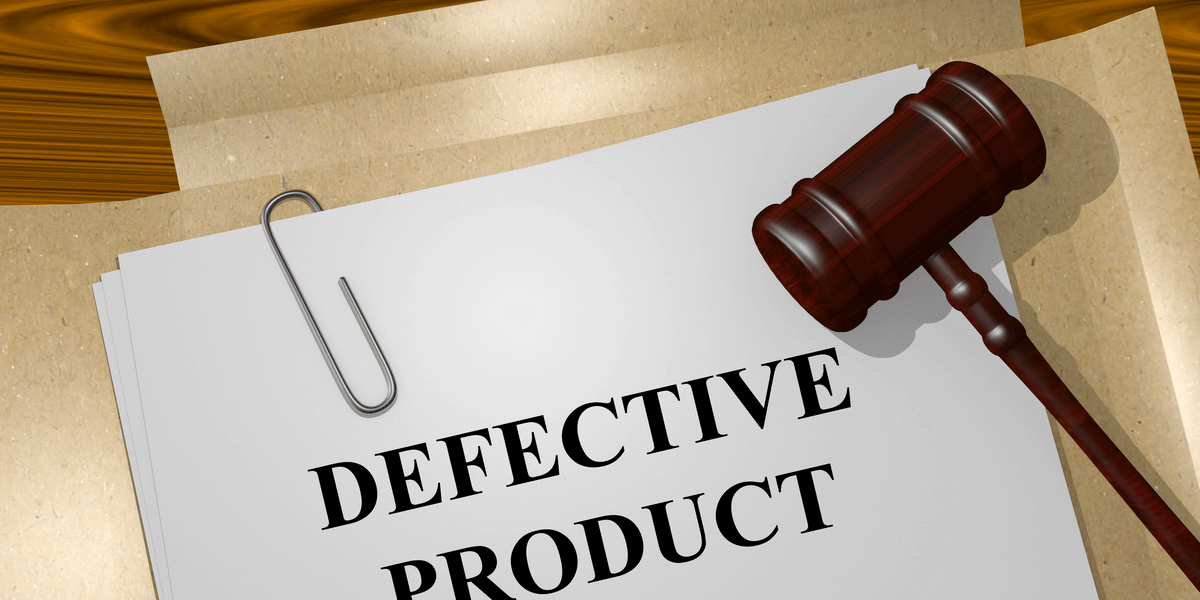The right to justice is available to consumers when a product meant to improve their daily lives harms them. A consumer product defect lawsuit occurs when defective products injure consumers. A product recall can be the beginning of these legal battles. They may also lead to settlement talks or court trials. Understanding the process, from collecting evidence to calculating damages, can significantly impact the outcome.
Understanding Product Defect Liability
A consumer product defect suit typically falls into three categories: Design defects, Manufacturing defects, and Failure to warn (inadequate Labeling). The product will be inherently dangerous if the design is flawed, even if manufactured correctly. Manufacturing defects can occur when production errors cause a design to diverge from what was intended. Failure to warn can be defined as inadequate warnings or instructions that could have prevented misuse.
You must identify the defective product and the liable party when an injury or damages occur.
Protecting Vital Evidence
Preserving evidence can be one of the most crucial early steps to a successful lawsuit over a defect in a consumer item. Even the strongest of arguments can falter without solid proof.
A guide to protecting evidence:
- Save the product: Avoid repairing or disposing of the defective items. Store it safely, preferably as-is.
- Take photos, videos, and other media: Document damages, injuries, or defective products. Include timestamps if possible.
- Store receipts and the packaging: These documents can prove the purchase history and that the product is being used as intended.
- Obtain medical reports: The medical documentation will show that the defect caused the injury.
- Collect statements from witnesses: Any witness who witnessed the incident in progress can provide valuable testimonials.
If these elements are missing, proving that a particular product caused the damage or injury is difficult.
Investigating Recalls Prior To The Current One
The next step of a consumer defect lawsuit is to determine if the product has had any previous issues. Prior recalls can be used to support your case. They show the manufacturer was aware but didn’t act.
To retrieve prior recall reports, you can use:
- Commission on Consumer Product Safety CPSC: This government organization maintains a searchable database on consumer products that have been recalled.
- Website for the Manufacturer: Companies must often list recalls to comply with regulatory organizations.
- News Archives: News outlets may report large-scale, high-profile product recalls.
- Legal database: Public record of previous lawsuits can reveal patterns of negligence.
The liability argument can be strengthened by identifying a product recall or defect that matches yours. This can also expedite litigation.
Calculating Punitive And Compensatory Damages
Once liability has been established, the attention then turns to damages. In product liability lawsuits, two damages are awarded: compensatory and exemplary.
Damages compensatory
They aim to return an injured party to his or her original condition before the injury. Compensatory damages are:
- Economic damages: medical bills, lost wages, repair or substitute costs.
- Non-economic damages: Distress, mental distress, and loss of consortium.
To accurately calculate compensatory damages, you’ll also need a thorough accounting of all incident-related expenses and a professional evaluation for nontangible losses.
Punitive Damages
Punitive compensation is given in circumstances of wilful misbehaviour or egregious neglect. Here, the goal isn’t to just compensate the victims but to punish those who have committed the crime and to deter future similar acts. In determining the outcome of a case, courts take into consideration factors such as:
- The severity
- The company’s knowledge of the defect
- Steps taken (or not taken) to correct the issue
Punitive compensation is not guaranteed. Typically, it’s reserved for the worst cases of blatant disregard by the manufacturer of safety warnings or consumer complaints.
Navigating Settlement Discussions
Settlement negotiations are usually the best way to resolve most product defect claims. This is where you and the defendant’s legal representatives evaluate the strength of your case, the cost and jury award potential, and the likelihood of litigation.
Tips and tricks for a successful settlement negotiation:
- Stay Organized: Have all your documents and proof easily accessible.
- Be realistic: Understand what your claim will likely be worth based on similar cases.
- Know the right time to push back. If your offer isn’t sufficient, you may need to take the case to trial.
Settlements can provide a quicker resolution and more privacy. But the compensation you receive must match your losses and future requirements.
Conclusion
Consumer Product Defect Lawsuit involves far more than filing paperwork. It is important to document every detail of an injury and understand your legal rights as soon after the incident occurs. By preserving your evidence, investigating past recalls, accurately assessing damages, and preserving all the necessary information, you are better equipped to negotiate an equitable settlement or win at court. Whether your dispute is settled through dialogue or litigation, being informed about your rights and options will be your first step in achieving justice.




